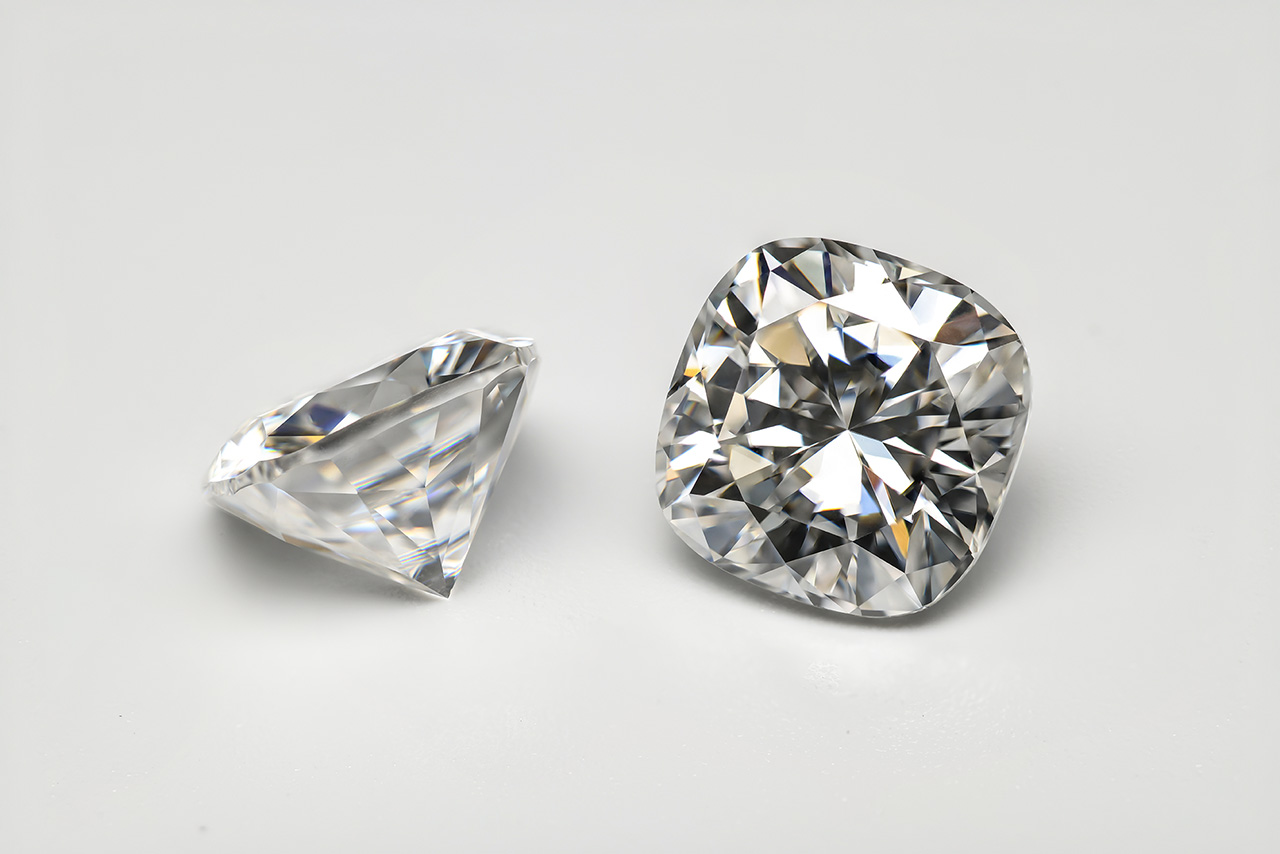- Home
- /
- Diamond education
- /
- Diamond 4Cs
- /
- Diamond Clarity
The Ultimate Guide to Diamond Clarity
May 04, 2023

Close your eyes and imagine looking through a diamond. Do you see the light bouncing off the facets and passing through to the other side? Is it as clear as a drop of rain or as if you’re looking through the cleanest glass? If so, the diamond you’re imagining has excellent clarity.
Clarity, along with cut, color, and carat, is one of the ever-important 4Cs of diamond grading. It’s very influential in your diamond’s appearance and is critical in making diamonds have that coveted clear look that everyone loves.
What is diamond Clarity?
Diamond clarity measures the presence (or absence) of any inclusions or blemishes. Both types of flaws form during the natural process of creating a diamond, as it requires an incredible amount of pressure and heat for billions of years.
- Inclusions - Inclusions can be material or crystals that form inside the stone itself. The biggest thing to remember is that inclusions are internal, so a diamond with any amount of inclusions has imperfections inside the stone.
- Blemishes - In contrast, blemishes are external. If there are any flaws or imperfections on the stone’s surface, they’re called blemishes.
Given the arduous process involved in creating diamonds, finding a diamond with perfect clarity (otherwise called a Flawless diamond) is incredibly rare!
Why Is It Important?
Clarity directly influences a stone’s appearance. Diamonds with a high number of inclusions, blemishes, or both may look cloudy or dirty. The higher the number of imperfections, the less appealing it is to the eye.
Diamonds with low clarity scores won’t have a lot of brilliance, fire, or scintillation. Low clarity robs the stone of its most prized qualities. While clarity is only one of the Four Cs, its effect on appearance can’t be overstated. If a diamond has a high number of blemishes and inclusions, its look will suffer regardless of color, cut, or carat.
Along with its influence on appearance, clarity also impacts value. Flawless diamonds will have a remarkably higher value than Included diamonds. You can count on spending more for a diamond with few inclusions and blemishes, especially if it receives high grades in the other Four C categories as well.
How Are Diamond Clarities Graded?
Diamonds have billions of years to form inclusions and blemishes. Some are obvious to the naked eye, while others require specialized equipment and magnification to spot. Suffice it to say, the numbers and severity vary wildly, but experts have created a few categories.
- Flawless - These diamonds have no inclusions or blemishes, even when placed under 10x magnification.
- Internally Flawless - Internally, there are no inclusions present even with strong magnification.
- Very, Very Slightly Included (VVS1 and VVS2) - Inclusions are present, but they are so subtle that 10x magnification and a great deal of skill are needed to reveal them.
- Very Slightly Included (VS1 and VS2) - Inclusions are more obvious than VVS1 and VVS2 diamonds, but still require 10x magnification and effort to spot.
- Slightly Included (SI1 and SI2) - Inclusions are present and easier to observe with magnification.
- Included (I1, I2, and I3) - Inclusions are severe enough to potentially alter brilliance and transparency. They can be spotted easily with 10x magnification.

What is the Most Common Diamond Clarity?
For engagement rings, the most commonly sold clarity level is the VS1 and VS2, meaning the stone has inclusions but they can’t be seen without magnification. Even with the 10x magnification and expert skill, they’re difficult to see.
VS1 and VS2 diamonds cost substantially less than a Flawless diamond, yet to the naked eye, they’re unlikely to look much different. Flawless diamonds have their place, of course, but they’re often out of reach for the average consumer.
Slightly included diamonds (SI1 and SI2) are popular among those really trying to stretch their budgets. Again, you’re unlikely to spot anything wrong with the diamond simply by looking at it. There are inclusions and blemishes, and they won’t be too difficult to tag with magnification, but they don’t interfere with the diamond’s brilliance.
Purchasing a VS1, VS2, SI1, or SI2 will save you thousands of dollars compared to choosing a flawless diamond. They’re still eye-clean, meaning you can’t see the imperfections without special tools and help, so it’s worth the savings to many people.
How Does Diamond Clarity Affect Its Value?
The fewer imperfections a stone has, the more value it holds. A Flawless diamond will cost substantially more than a lower clarity grade, even though the stones likely look the same when observed by average people. With a Flawless diamond, you’re paying for the rarity more than its appearance. It’s exceedingly difficult for a diamond to form without any verifiable trace of imperfections, and you pay for the privilege of owning one that manages it.
As an example, a one-carat diamond with D-grade color (meaning it’s completely colorless), and Flawless clarity runs upwards of $20,000. A diamond of the same carat weight and color, yet VS1 or VS2 clarity, drops down to around $13,000. That is a massive difference in price for two diamonds that look the same. Ultimately, it’s a decision about how much rarity means to you, and there’s no right or wrong answer.
Conclusion
With that, you have all the basics to understand diamond clarity. Since it’s part of the 4Cs, you can count on it to affect a diamond’s price and appearance, though you may not notice many of the more subtle imperfections yourself. As you work out your budget and priorities, keep in mind that clarity is only one of many deciding factors.

















